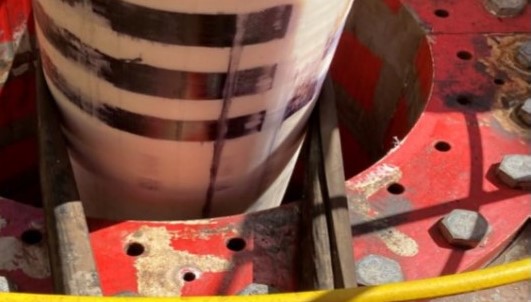After an incident where damage to a flexible riser was noted, IMCA provides lessons learned to avoid similar issues in the future.
The incident
During deployment of a water injection riser from a vessel, damage to the outer coating occurred when it came into contact with the sharp edge of the flare in the moonpool area.
A water injection riser was being installed through a project-supplied flare in the moonpool via the vessel’s Tiltable Lay System (TLS) at an angle of 6.8°.
The flare had been designed to direct and protect the riser at the exit. However, design reviews, subsequent risk assessments and inspections had failed to identify the hazard of the sharp upper lip of the flare with the potential to damage the riser.
Probable cause
- During design the sharp edge of the flare had not been identified as a hazard and therefore, was not chamfered for protection of the product;
- The project risk assessment did not identify proper controls to prevent and mitigate possible damage to the product or its coating due to seabed topography, tilted TLS etc;
- Lessons had not been learned – previous learnings from similar flexible product damage events had not been transferred to the project team prior to design.
Lessons learned
- Learnings from previous or similar flexible product damage events have to be reviewed and considered during the full life cycle from design to installation;
- During design reviews and risk assessments specific to flexible products, ensure sharp edges and potential hazards that can cause damage are considered and mitigated;
- Project supplied equipment to be integrated into lay systems should be reviewed by vessel team before fabrication and then again at installation.






























































